What is dolomite and where is it used?
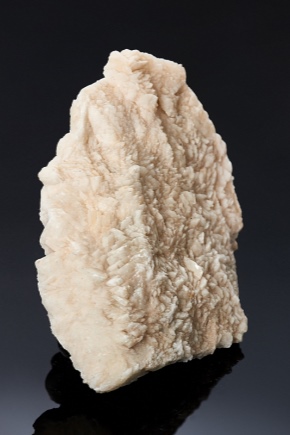
Anyone interested in the world of minerals and rocks will be interested in learning what it is - dolomite. It is very important to know its chemical formula and the origin of the material in the quarries. And you should also figure out the use of tiles from this stone, compare it with other materials, find out the main varieties.

What it is?
Disclosure of the main parameters of dolomite is appropriate from its basic chemical formula - CaMg [CO3] 2. In addition to the main components, the described mineral includes manganese and iron. The proportion of such substances is sometimes a few percent. The stone looks pretty attractive. It is characterized by a gray-yellowish, light brown, sometimes white color.
Another typical property is the white color of the line. Glassy luster is characteristic. Dolomite is classified as a mineral in the carbonate category.
Important: the sedimentary rock of the carbonate category also has the same name, inside which at least 95% of the main mineral. The stone got its name from the name of the French explorer Dolomieux, who was the first to describe this type of minerals.
It should be noted that the concentration of calcium and magnesium oxides may vary slightly. Periodically, chemical analysis reveals minor impurities of zinc, cobalt and nickel. Only in Czech samples does their number reach a tangible value. Isolated cases are described when bitumens and other extraneous components were found inside dolomite crystals.
Distinguishing dolomites from other materials is rather difficult; in practice, they serve as an excellent material for tiles, but they can be used in other ways.

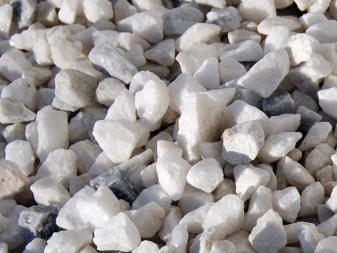
Origin and deposits
This mineral is found in a wide variety of rocks. It is often adjacent to calcite and is quite comparable to it. Ordinary vein formations of hydrothermal nature are much richer in calcite than dolomite. In the process of natural processing of limestone, dolomite masses with large crystals often appear. There, this compound is combined with calcite, magnesite, quartz, various sulfides and some other substances.
However, the main part of the dolomite deposits on Earth has a completely different origin.
They were formed in different geological periods, but primarily in the Precambrian and Paleozoic, in the midst of sedimentary carbonate massifs. In such strata, dolomite layers are very thick. Sometimes they are not quite correct in shape, there are nests and other structures. The details of the origin of dolomite deposits are now causing debate among geologists. In our era, dolomite is not deposited in the sea, but in the distant past they formed as primary sediments in salt-saturated basins (this is indicated by the close proximity to gypsum, anhydrite, and other sediments).


Geologists believe that many modern deposits also arose in connection with a completely different process - dolomitization of previously precipitated calcium carbonate... It is well established that the new mineral is replacing shells, corals and other organic deposits containing calcareous substances. However, the process of transformations in nature does not end there. Once in the weathering zone, the formed rocks themselves undergo slow dissolution and destruction. The result is a loose mass with a fine structure, further transformations of which are beyond the scope of this article.
Dolomite deposits cover the western and eastern slopes of the Ural Range. Quite a lot of them are found in the Donbass, in the Volga basin. In these areas, the deposits are closely related to carbonate strata formed in the Precambrian or Permian period.
Large quarries of dolomite in the Central European region are known for:
- in Wünschendorf;
- in Kashwitz;
- in the Crottendorf area;
- in the districts of Raschau, Oberscheibe, Hermsdorf;
- in other parts of the Ore Mountains.


Geologists also found it near Dankov (in the Lipetsk region), in the vicinity of Vitebsk. Very large natural deposits are found in Canada (Ontario) and Mexico. Substantial mining is typical of the mountainous regions of Italy and Switzerland. Fractured dolomite in combination with clay or salt seals concentrates large hydrocarbon deposits. Such deposits are actively used in the Irkutsk region and in the Volga region (the so-called Oka over-horizon).
The Dagestan stone is considered unique. This breed is found only in a single place, in the area of the village of Mekegi in the Levashinsky region. It is dominated by rocks and valleys. The extraction is carried out exclusively by hand. The blocks are sawn to a size of about 2 m3. The deposits are located at a fairly considerable depth, surrounded by iron hydroxide and special clay - therefore the stone has an unusual color.
The Ruba dolomite is quite widely known among connoisseurs. This deposit is located 18 km north-east of Vitebsk. The original Ruba quarry, as well as the Upper reaches, are now fully depleted. Extraction is carried out at the remaining 5 sites (one more is mothballed as a monument of history and culture).
The thickness of the rock in different places varies greatly, its reserves are estimated at hundreds of millions of tons.


Deposits of a purely detrital structural type are almost never found. But it stands out:
- crystalline;
- organogenic-detrital;
- clastic crystal structure.
Ossetian dolomite Genaldon is in great demand. It is distinguished by its extreme mechanical strength. And also this breed is considered an attractive design solution. Such a stone perfectly tolerates even severe frosts.
The Genaldon field (associated with the river of the same name) is the most developed and actively developed in Russia.


Properties
Dolomite hardness on the Mohs scale ranges from 3.5 to 4... It is not particularly durable, rather the opposite. Specific gravity - from 2.5 to 2.9... The trigonal system is typical for him. There is an optical relief, but not too pronounced.
Dolomite crystals are transparent and translucent well. They are characterized by a variety of colors - from white-gray with a yellowish tint to a mixture of green and brown tones. The greatest value is attributed to pinkish aggregates, which are very rarely found. Crystals of the mineral can have rhombohedral and tabular forms; curved edges and curved surfaces are almost always present. Dolomite reacts with hydrochloric acid.
The measured density is 2.8-2.95 g / cm3. The line is colored white or light gray. Under the influence of cathode rays, natural stone emits a rich red or orange color. The cleavage of the unit is about the same as that of glass. By GOST 23672-79 dolomite is selected for the glass industry.


It is made both in lumpy and ground versions. According to the standard, the following are normalized:
- magnesium oxide content;
- iron oxide content;
- concentration of calcium oxide, silicon dioxide;
- humidity;
- the proportion of pieces of various sizes (fractions).


Comparison with other materials
It is very important to know about the differences between dolomite and other substances. First of all, you need to figure out how to distinguish it from limestone. Many counterfeiters sell lime crumb under the brand name of dolomite flour. The main difference between the two is that limestone contains no magnesium at all.Therefore, limestone will boil violently upon contact with hydrochloric acid.
Dolomite will react much more calmly, and complete dissolution is possible only when heated. The presence of magnesium allows the mineral to perfectly deoxidize the earth without oversaturation with calcium. If you use limestone, the formation of unpleasant whitish lumps is almost inevitable. It should be noted that it is very difficult to use pure dolomite as a building material. Quite different materials are often used as fillers for "dolomite" blocks.
It is also important to know the difference from magnesite. To accurately determine lime and magnesia, chemists take very small weights. The reason is the high concentration of such components. The most important test is the reaction with hydrochloric acid.
The optical properties of the mineral are also important; Dolomite differs from sandstone so little that it can only be accurately determined in a professional chemical laboratory.



Varieties
Micro-grained rock is uniform and generally chalk-like. Increased strength helps to distinguish it. The presence of thin layers and the absence of traces of extinct fauna are characteristic. Micro-grained dolomite can form interlayers with rock salt or anhydrite. This type of mineral is relatively rare.
Sandstone type is homogeneous and contains fine-grained structures. It really looks like sandstone. Some specimens may be rich in ancient fauna.
Concerning cavernous coarse-grained dolomite, then it is often confused with organogenic limestone.
This mineral is saturated with the remains of fauna in any case.



Often shells of this composition have a leached structure. Instead, voids may be found. Some of these cavities are filled with calcite or quartz.
Coarse-grained dolomite is characterized by an uneven fracture, surface roughness, and significant porosity. A mineral with large grains, in general, does not boil on contact with hydrochloric acid; fine-grained and fine-grained samples boil very weakly, and not immediately. Powder crushing increases the reactivity in any case.
A number of sources mention caustic dolomite. It is an artificial product obtained by processing natural raw materials. First, the mineral is fired at 600-750 degrees. Further, the semi-finished product will have to be crushed to a fine powder.
Clay and ferruginous impurities affect the color in a rather strong way, and it can be very diverse.

Application
Dolomite is mainly used in the production of metallic magnesium. Industry and other industries are in dire need of significant quantities of magnesium alloys. On the basis of the mineral, various magnesium salts are also obtained. These compounds are extremely valuable for modern medicine.
But a huge amount of dolomite is also used in construction:
- like crushed stone for concrete;
- as a semi-finished product for refractory glazes;
- as a semi-finished product for white magnesia;
- to obtain panels for the purpose of finishing the facade;
- to obtain certain grades of cement.
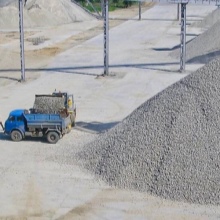


Metallurgy also needs supplies of this mineral. It is used in this industry as a refractory lining for smelting furnaces. The role of such a substance as a flux is important when smelting ore in blast furnaces. Dolomite is also in demand as an additive to the charge in the production of particularly strong and resistant glasses.
A lot of dolomite flour is ordered by the agricultural industry. Such a substance:
- helps to neutralize the acidity of the earth;
- loosens the soil;
- helps beneficial soil microorganisms;
- provides increased efficiency of the added fertilizers.


Returning to construction, it is worth noting the widespread use of dolomite in the production of dry mixes. The special shape of the grains (not the same as that of quartz sand) enhances adhesion. Dolomite fillers are added to:
- sealants;
- Rubber products;
- linoleum;
- varnishes;
- paints;
- drying oil;
- mastics.


The most dense samples are used to form facing slabs. They are more often used for exterior rather than interior decoration. Kovrovsky, Myachkovsky and Korobcheevsky types of breed are widely known in traditional Russian architecture. It is also worth noting the following areas of use:
- paving garden and park paths;
- receiving steps for porches and street stairs;
- production of flat decorative items for the garden;
- construction of rockeries;
- the formation of retaining walls;
- combination with garden plants in landscape design;
- paper production;
- chemical industry;
- decorating fireplaces and window sills.

You can learn more about what dolomite is from the video below.




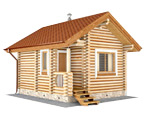
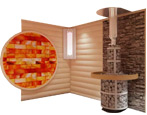
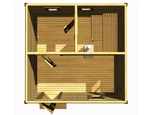
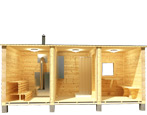
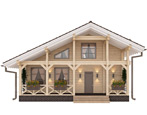



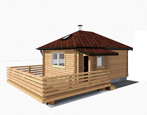

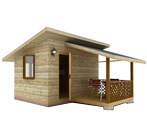

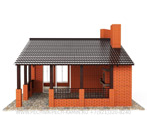
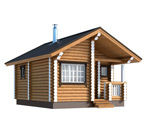
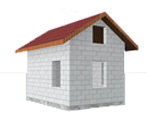

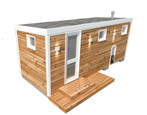
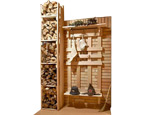

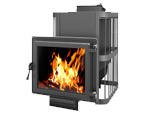
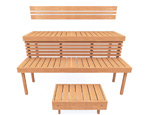


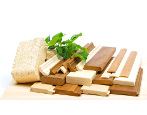

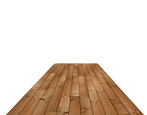
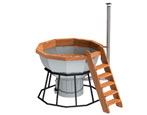
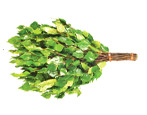
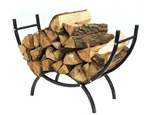
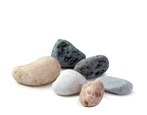
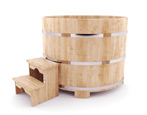
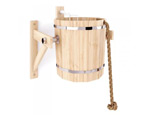
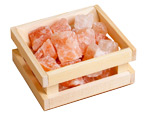


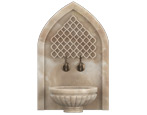

























































The comment was sent successfully.